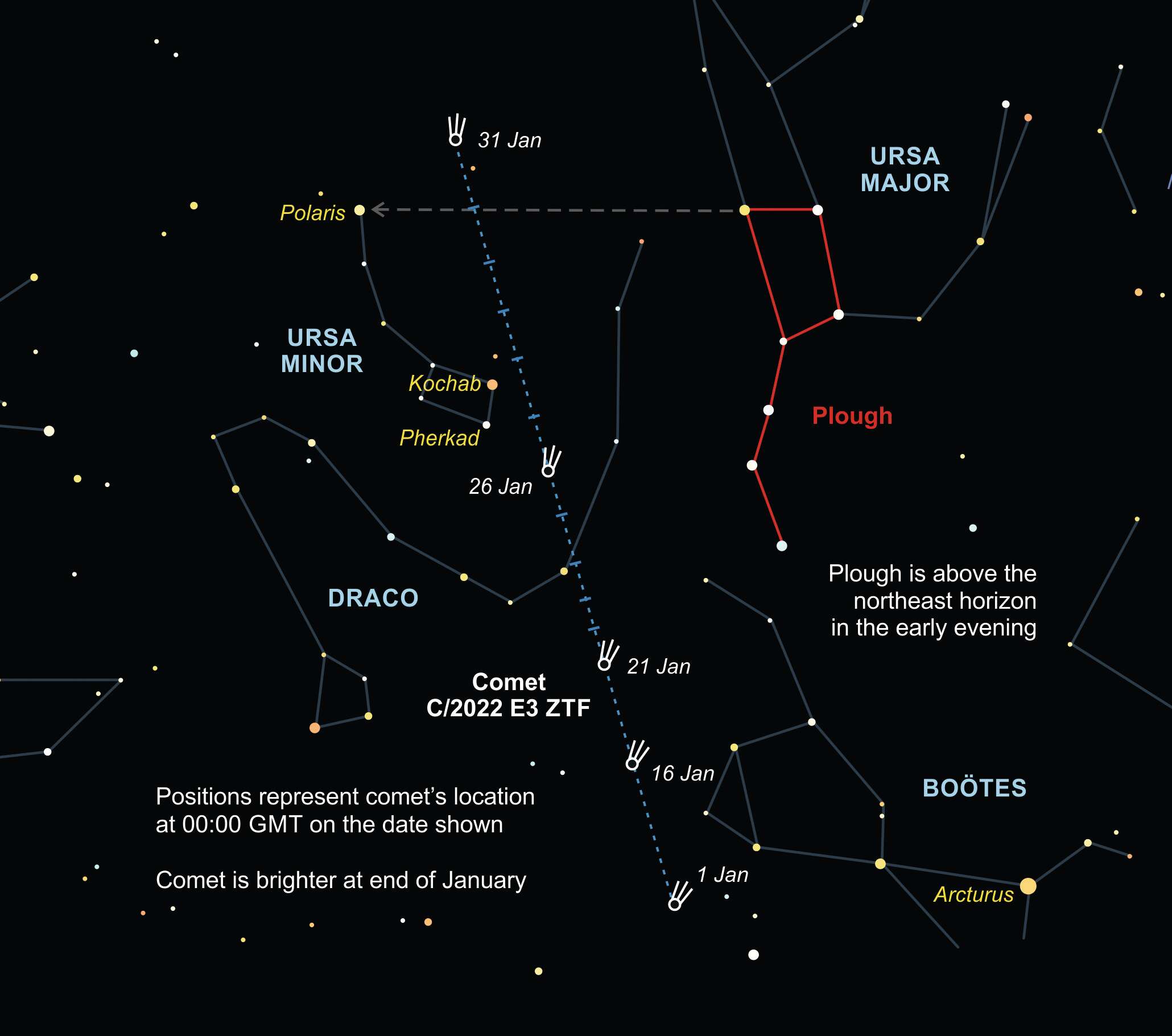ASTRONOMY FOR BEGINNERS

HOW TO SPOT A COMET
WHEN: THROUGHOUT JANUARY
If you find the precision of astronomical predictions impressive, this month’s topic might change your mind. C/2022 E3 ZTF is a well-placed comet, possibly about to break the naked-eye visibility threshold. However, comets are notoriously difficult to predict, sometimes likened to cats in the way they ignore predictions and do just whatever they please. In astronomy, a bright comet roughly describes any such object visible through binoculars or a small telescope. Many fall well short of this requirement!
Comet C/2022 E3 ZTF is a long-period comet discovered on 2 March 2022, with an orbit estimated as longer than 50,000 years. Consequently, this is a non-periodic comet; that’s what the ‘C/’ in the name means. A periodic comet is typically regarded as one with an orbital period of less than 200 years. The ‘2022 E3’ part of the name indicates 2022 as the year of discovery, it being the 3rd (3) comet discovered in the fifth half-month of that year (E). Comet discovery half-months are indicated by the letters A, B, C and so on, with I being omitted to avoid confusion with 1. The ‘ZTF’ in this comet’s name indicates that it was discovered by the Zwicky Transient Facility at Mount Palomar in California.
As it tracks near to the North Star, Polaris, comet C/2022 E3 ZTF passes close to the two middle brightness stars in Ursa Minor, called Kochab and Pherkad. Being relatively close to Polaris, the pair are often described as ‘the Guardians of the Pole’. To navigate this area of sky, the best starting point is the Plough or Saucepan pattern. Use our chart and see whether you can get a view of this comet, but be prepared because it may not be as bright as you might imagine. Then again, if something unexpected happens, it may well be brighter! PL